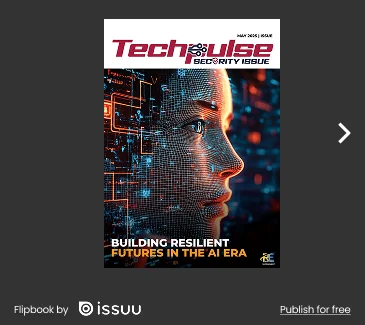As a Chief Business Sales Strategist, what unique experiences have shaped your approach to regional sales leadership?
Over the past 18 years, my journey across channel partner management and enterprise sales leadership has shaped my approach to driving regional growth. Leading diverse teams across South Asia, APAC, and the Middle East, I have learned that every market has unique challenges, but customer-centricity and trust remain universal. My experience in building scalable partner ecosystems, driving digital transformation initiatives, and leading complex account strategies has taught me to balance execution with long-term vision. I believe in empowering teams, leveraging data-driven insights, and forging strong alliances with vendors and system integrators. These experiences enable me to deliver sustainable growth while aligning regional execution with global strategy.
What KPIs do you prioritize to measure sales efficiency and profitability at the regional level?
At the regional level, I focus on KPIs that balance efficiency with profitability. Revenue growth and gross margin are key indicators, but I also measure pipeline health, conversion ratios, and average deal size to ensure we are driving quality opportunities, not just volume. Sales velocity and cycle time are crucial to identify bottlenecks and accelerate execution. On the profitability side, I track cost-to-serve, partner contribution, and share of wallet expansion across accounts. Customer satisfaction scores and renewal rates are equally important, as long-term success comes from retention as much as acquisition. By aligning these KPIs, I ensure we drive sustainable growth while maintaining financial discipline.
When entering new regional markets, what step-by-step strategy do you follow to build traction?
Whenever I look at entering a new market, I keep it very structured but also practical. First thing is to understand the ground realities, size of the opportunity, competition, and where the gaps are. I rely on both my team’s market knowledge and modern tools like analytics dashboards or AI insights to get a clear picture.
From there, the next step is to build traction through the right local partners, system integrators, resellers, and vendors, who already have strong customer trust. Then, I put in place a focused go-to-market plan, mixing traditional engagement with digital-first activities like targeted campaigns and automation-led lead generation.
Equally important is creating early customer success stories, if the first few deployments go well, it becomes much easier to scale. Finally, I keep a very close watch on real-time KPIs to adjust quickly if something is not working. That mix of planning, local execution, and using modern tech helps me build both fast traction and long-term growth.
With your expertise in driving regional business sales, how do you see platforms like GITEX and other tradeshows contributing to strengthening sales pipelines and accelerating partnerships—particularly in the context of AI-powered sales operations?
Events like GITEX and other major Technology shows play a very real role in building the sales pipeline. They bring the entire ecosystem together. Customers, partners, vendors and create the kind of face-to-face engagement that digital channels cannot replace. For me, these platforms are not just about showcasing products, they are about accelerating trust and partnerships in a very short time frame.
Now with AI-powered sales operations, the impact is even stronger. We can capture and analyse every interaction leads, conversations, interest levels and immediately feed that data back into Data management systems for faster follow-up. This means what used to take months of nurturing can now be turned into real opportunities in weeks.








